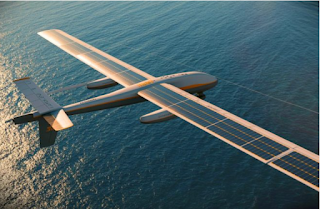"Illustration of China's groundbreaking portable laser weapon operating in extreme temperatures. Image generated by AI." (Sustainability Times, “China Stuns the World Again”: New 2.47kW Portable Laser Works in Arctic Cold and Blistering Saharan Heat)
New Chinese laser weapons can operate from arctic cold to Sahara heat. The portable 2,47 kW laser system can be used against vehicles, robots, and other military personnel. The same system can also be used to cut electric wires and cut steelworks. And that is the true advance in laser weapon development. The laser weapon can use electric systems to create light. But it is also possible to use things like acetylene lamps for that purpose. The laser weapon can also use the laser-LEDs. That pumps energy to laser rays that travel between them.
That kind of system allows developers to make new types of weapons. Or weaponized applications. The laser weapon can operate also at orbital, where even small laser weapons can cause damage to satellites and space suits.
Illustration of the HQ-29 missile defense system in action. Image generated by AI. (Sustainability Times, “China Prepares for War in Space”: HQ-29 Missile System Can Destroy Satellites and Ballistic Threats Mid-Air)
Another interesting thing is that the Chinese created a new HQ-29 missile system that can be used in anti-ballistic missile, ABM, and anti-satellite, ASAT roles. Those missiles tell that China is prepared for space warfare. But the fact is that all rockets that can carry satellites or any payload to orbiter can operate as space weapons. The critical thing is the miniature satellites that can shoot even hundreds in one launch.
Heavy booster rockets can transport those miniature satellites to orbit. And when command centers give orders, those satellites will impact other satellites. Miniature satellites that use advanced AI can also dive against incoming ASAT weapons. Those satellites can operate in other missions, and when time is up they can begin their attack procedures.
"Illustration of a solar-powered drone with a wingspan larger than a Boeing 747 designed for month-long flights. Image generated by AI." (Sustainability Times, “We Built This to Fly Forever”: Engineers Unveil Solar Drone With 224-Foot Wingspan Capable of Month-Long Flights)
The miniature satellite can recognize the target using similar technology that Javelin missiles use. The satellite recognizes its target by using the image. And if those systems are shot to high-orbiter using the heavy booster, they can attack against their targets from the higher altitudes. There is an attack variant where the small satellite pulls the large-size trawl that it uses to put satellites following it. And then that satellite just dives into the atmosphere, pulling the target satellite behind it.
Things like solar-powered aircraft that can rise about 30 km high can transport small airborne launching vehicles to the edge of space. Then those small satellite carriers like Pegasus can transport satellites to the low earth orbiter. The Pegasus-type launching vehicles can also transport ASAT and ABM weapons. After launch the unmanned launching aircraft can return home. The new solar-powered aircraft whose wingspan is the same as Helios can make this thing. The problem with Helios was that its wings were not stiff enough. So that caused a crash. The wingspan of that new system is the same as the C-5 Galaxy. And it should rise at least 29 km altitude.
https://www.sustainability-times.com/impact/china-prepares-for-war-in-space-hq-29-missile-system-can-destroy-satellites-and-ballistic-threats-mid-air/
https://www.sustainability-times.com/impact/china-stuns-the-world-again-new-2-47kw-portable-laser-works-in-arctic-cold-and-blistering-saharan-heat/
https://www.sustainability-times.com/energy/we-built-this-to-fly-forever-engineers-unveil-solar-drone-with-224-foot-wingspan-capable-of-month-long-flights/
https://en.wikipedia.org/wiki/AeroVironment_Helios_Prototype
https://en.wikipedia.org/wiki/Northrop_Grumman_Pegasus




















